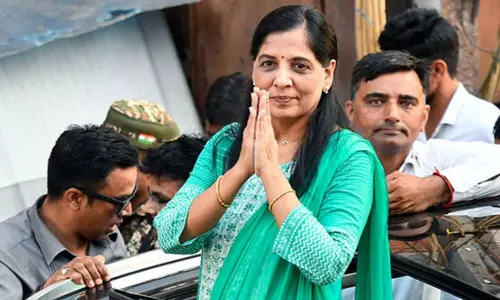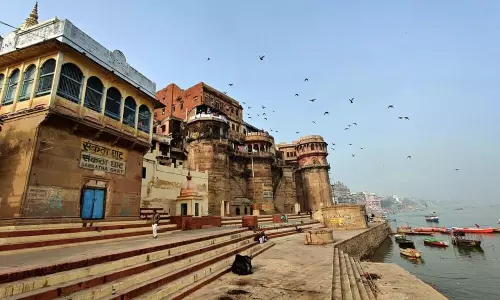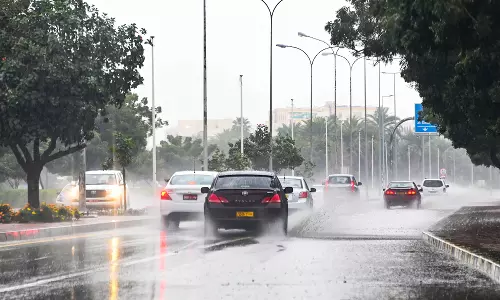
Assam delimitation draft published by EC; no. of Lok Sabha, assembly seats not changed
text_fieldsNew Delhi: The draft delimitation document for Assam was released by the Election Commission on Tuesday. It included a proposal to keep the state's 126 assembly seats and 14 Lok Sabha constituencies.
The EC has suggested that the number of assembly seats set aside for Scheduled Castes be raised from eight to nine, and the number of seats set aside for Scheduled Tribes from sixteen to nineteen, according to an official release.
A parliamentary seat has been proposed to be named Kaziranga.
The EC draft on delimitation proposes to reserve 19 assembly and two parliamentary seats for STs, and nine assembly and one parliamentary seat for SCs.
The poll body proposed that the number of assembly seats in the autonomous districts of West Karbi Anglong be increased by one and in Bodoland autonomous council areas by three (from 16 to 19).
The EC has retained Diphu and Kokrajhar parliamentary seats reserved for ST and continued the Lakhimpur parliamentary seat as unreserved.
According to the proposals, there will be one unreserved assembly seat in Dhemaji district. Two parliamentary seats have been proposed for the Barak Valley districts — Cachar, Hailakandi and Karimganj.
Chief Election Commissioner Rajiv Kumar and Election Commissioners Anup Chandra Pandey and Arun Goel are slated to visit Assam in July for a public hearing on the draft proposal.
The delimitation exercise was carried out on the basis of the 2001 census. The last delimitation was done in Assam in 1976.
Seeking to make the delimitation exercise fair and equitable, the poll panel devised the guidelines and methodology keeping in mind the constitutional and legal provisions and the suggestions received in representations.
The EC visited Assam from March 26-March 28 this year and held interactions with political parties, public representatives, civil society members, social organisations, members of the public and officers in the state including the chief electoral officer, deputy commissioners of all districts and district election officers regarding delimitation exercise in the State.
In total, representations from 11 political parties and 71 other organisations were received and considered.
The lowest administrative unit shall be a ‘village’ in rural areas and a ‘ward’ in urban areas. Village and ward have been kept intact and have not been broken anywhere in the state.
The draft proposal has been prepared based on administrative units i.e., development blocks, panchayats and village in rural areas and municipal boards, and wards in urban areas.
The EC has made efforts to keep all constituencies, as far as practicable, as geographically compact areas with regard been given to the physical features, population, existing boundaries of administrative units, facilities of communication and public convenience, the statement said.
It said deviation to a certain extent has been allowed due to huge inter-district variation in geographical features, population density, means of communication, public convenience, and contiguity of the areas.
It has also been allowed in some cases to meet the necessity of avoiding the breaking of administrative units as constituencies cannot be delimited by having an exactly equal population in all cases, the EC said.
In Assam, since the last delimitation (1976), the number of districts have increased from 10 to 31 and similarly the number of administrative units at development block and gram panchayat levels have undergone drastic changes.
Taking all these factors into account, the EC has categorised all 31 districts into three broad categories A, B and C giving a margin of (+/-) 10 per cent of the average population per assembly constituency, while proposing an allocation of the constituencies to the districts.
The average population density of the state is 338 persons per sq.km. A population density range of 304 (subtracting 10 per cent from the average population density) to 372 (adding 10 per cent to the average population density) has been established and on this basis, the above said three categories have been made.
‘A’ category districts are those having a population density less than 304 persons per sq. km., while ‘B’ category are those with population density having between 304 to 372 persons per sq. km. The ‘C’ category districts are those having population density more than 372 persons per sq. km.
The term of the current Assam legislative assembly will end on May 20, 2026. The state currently has 14 Lok Sabha, 126 assembly and seven Rajya Sabha seats.
On February 28, 2020, the central government cancelled its earlier notifications which deferred delimitation in Assam, Nagaland, Manipur and Arunachal Pradesh due to security issues, saying the exercise could be carried out “now” as the previous circumstances cease to exist.
Later in March 2020, a delimitation commission was formed under former Supreme Court judge Ranjana Prakash Desai to redraw Lok Sabha and assembly constituencies of the Union Territory Jammu and Kashmir and the northeastern states of Assam, Arunachal Pradesh, Manipur and Nagaland.
But when the delimitation panel was given a one-year extension on March 3, 2021, a Law Ministry notification said that now the panel would look only into the delimitation of the Union territory of Jammu and Kashmir.
“In exercise of the powers conferred by Section 3 of the Delimitation Act, 2002 … the Central Government hereby makes the following amendments in the notification . . . dated the 06th March 2020, namely:- In the said notification, (i) in the opening paragraph, (a) the words, and the States of Assam, Arunachal Pradesh, Manipur and Nagaland, shall be omitted,” the notification had read.
Sources had then attributed various reasons, including court cases, for the omission of the four northeastern states from the delimitation exercise.
Later, in its letter dated November 15, 2022, the Law Ministry requested EC to conduct the delimitation of parliamentary and assembly constituencies in Assam.
The EC said some groups were in favour and some against the exercise to be carried out on the basis of the 2001 census.
With PTI inputs























